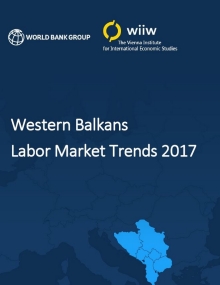Labor markets in the Western Balkan countries—comprising Albania, Bosnia and Herzegovina, Kosovo, FYR Macedonia, Montenegro and Serbia—are characterized by low employment rates and high unemployment by European standards.
In this report, labor market developments in the Western Balkan countries in the period 2010-2016 are presented and compared with selected member states of the European Union (EU).
As comparators, the report uses four countries that joined the EU at different times over the last 25 years, namely Austria (1995), Hungary (2004), Bulgaria (2007), and Croatia (2013). The analysis uses labor force survey data provided by the Statistical Offices of the individual Western Balkan countries and by Eurostat for the EU comparator countries.
Report highlights:
- Western Balkan countries increased employment by roughly 300,000 jobs since 2010, from an estimated 5.5 million in 2010 to 5.8 million in 2016. However, this rate of job creation is not enough to address the many challenges in the Western Balkan labor markets.
- Unemployment declined during this period by an estimated 200,000 people, from 23 to 21 percent, but inactivity remains high, especially among women, the low-educated, and youth. In addition, informal employment and long-term unemployment remain a significant challenge in the region.
- The winners among the recent employment recovery are workers aged 55 and older as well as the highly educated. The losers, on the other hand, are the low-educated, especially low-educated youth. Overall, youth unemployment levels remain critically high.
- No significant impact of economic growth on employment growth is currently observed in the aftermath of the financial crisis in the Western Balkans, and the impact of growth on unemployment is small.
- Therefore, the Western Balkan countries are not yet in a situation whereby the current levels of economic growth guarantee a return to job growth. The transition to modern market economies is not yet complete, and many structural issues remain to be addressed.
The full report and the accompanying database are available on the website of the Jobs Gateway in South Eastern Europe - SEE Jobs Gateway.
The SEE Jobs Gateway is a community of practice for labor market policies in the Western Balkan which brings together policy makers, academics, and experts from international organizations who regularly exchange ideas and learn from the experience of other countries with regard to labor market policies. Most members are from or have an interest in the Western Balkan region, comprising Albania, Bosnia and Hercegovina, FYR Macedonia, Kosovo, Montenegro and Serbia.

